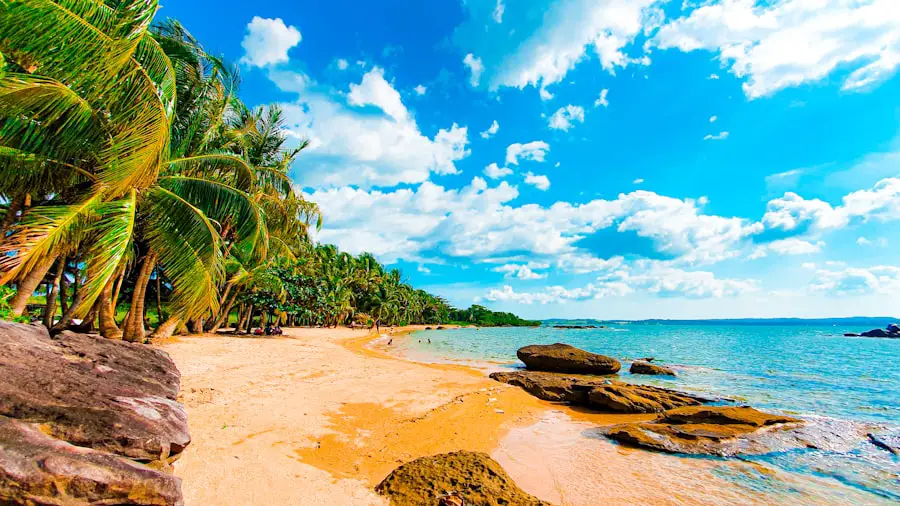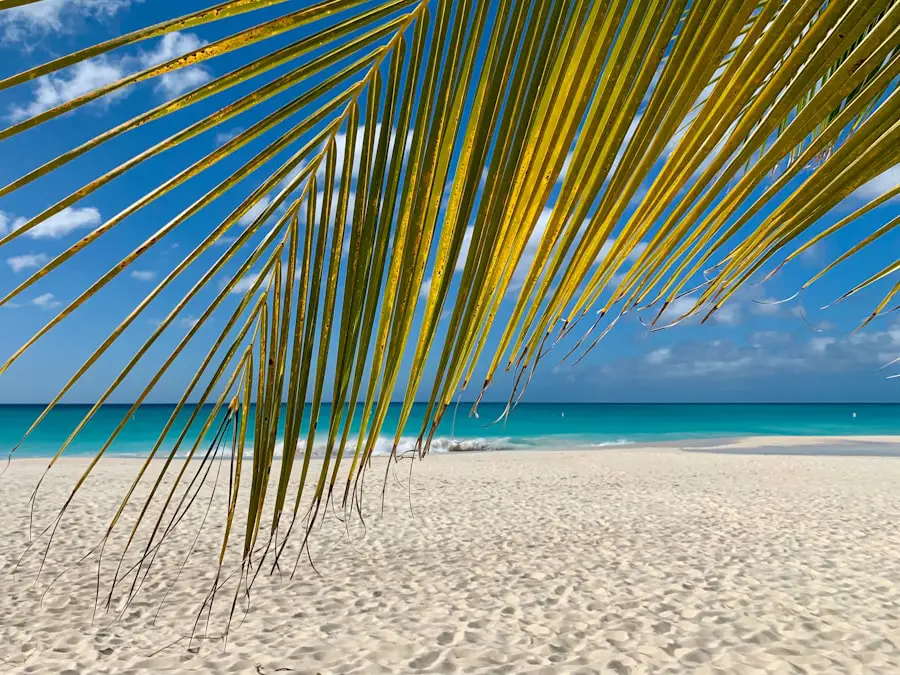Thailand, often referred to as the “Land of Smiles,” is renowned for its stunning landscapes, rich culture, and vibrant cities.
The country experiences a tropical climate characterized by three distinct seasons: the cool season, the hot season, and the monsoon season.
Each of these seasons offers unique experiences and opportunities for travelers, making it essential to understand the nuances of Thailand’s weather patterns. The cool season, which runs from November to February, is often considered the best time to visit due to its pleasant temperatures and lower humidity levels. In contrast, the hot season from March to May can be sweltering, with temperatures soaring above 35 degrees Celsius (95 degrees Fahrenheit).
The monsoon season, spanning from June to October, brings heavy rainfall and humidity but also transforms the landscape into a lush paradise. Understanding these seasonal variations is crucial for travelers looking to make the most of their time in Thailand, whether they are seeking beach relaxation, cultural exploration, or outdoor adventures.
Key Takeaways
- Thailand has a tropical climate with three main seasons: hot season, rainy season, and cool season.
- The peak season in Thailand is from November to February, with cool and dry weather making it the best time for outdoor activities and sightseeing.
- The shoulder season from March to May is hot and dry, making it ideal for beach vacations and water activities.
- Monsoon season in Thailand lasts from June to October, with heavy rainfall and high humidity, but it’s also the best time for experiencing lush green landscapes and fewer crowds.
- Thailand hosts a variety of festivals and events throughout the year, including Songkran (Thai New Year) in April and the Loy Krathong festival in November, offering unique cultural experiences for travelers.
Peak Season: November to February
The peak season in Thailand, which occurs from November to February, is marked by cooler temperatures and lower humidity, making it an ideal time for tourists to explore the country. During this period, average temperatures range from 20 to 30 degrees Celsius (68 to 86 degrees Fahrenheit), providing a comfortable climate for outdoor activities and sightseeing. Popular destinations such as Bangkok, Chiang Mai, and the islands of Phuket and Koh Samui see a significant influx of visitors during these months, leading to bustling markets, vibrant street life, and a lively atmosphere.
Travelers flock to Thailand during this peak season not only for the favorable weather but also for the numerous festivals and events that take place. The Loy Krathong festival, celebrated in November, is a mesmerizing spectacle where thousands of lanterns are released into the night sky, symbolizing the release of negative energy and the welcoming of good fortune. Additionally, the Chiang Mai Yi Peng Lantern Festival attracts visitors from around the globe who wish to witness the breathtaking sight of illuminated lanterns floating above the ancient city.
These cultural experiences are enhanced by the pleasant weather, making it an unforgettable time to visit.
Shoulder Season: March to May

As the peak season transitions into the shoulder season from March to May, travelers can expect rising temperatures and increased humidity. This period is characterized by hot weather, with temperatures often exceeding 35 degrees Celsius (95 degrees Fahrenheit) in many regions. While this may deter some visitors, those who are willing to brave the heat can benefit from fewer crowds and more affordable accommodation options.
The shoulder season presents an opportunity for budget-conscious travelers to explore Thailand’s attractions without the hustle and bustle of peak tourist traffic. Despite the sweltering heat, there are still plenty of activities to enjoy during this time. Many tourists take advantage of early morning or late afternoon excursions to avoid the midday sun.
Exploring ancient temples such as Wat Pho in Bangkok or Wat Phra That Doi Suthep in Chiang Mai can be particularly rewarding during these cooler hours. Additionally, beach destinations like Krabi and Koh Phi Phi offer stunning sunsets and vibrant nightlife that can be enjoyed after the sun goes down. The shoulder season also coincides with Songkran, Thailand’s traditional New Year festival celebrated in mid-April. This water festival transforms cities into lively battlegrounds where locals and tourists alike engage in friendly water fights, creating a unique cultural experience.
Monsoon Season: June to October
| Month | Rainfall (mm) | Temperature (°C) | Humidity (%) |
|---|---|---|---|
| June | 150 | 28 | 80 |
| July | 200 | 27 | 85 |
| August | 180 | 26 | 88 |
| September | 160 | 25 | 90 |
| October | 120 | 24 | 85 |
The monsoon season in Thailand spans from June to October and is characterized by heavy rainfall and high humidity levels. While this period may not be as popular among tourists due to concerns about weather disruptions, it offers a different perspective on Thailand’s natural beauty. The rain transforms the landscape into a lush green paradise, with waterfalls cascading down mountainsides and rivers swelling with fresh water.
This vibrant scenery attracts nature enthusiasts and photographers looking to capture Thailand’s stunning vistas. Traveling during the monsoon season requires some flexibility and planning. While heavy downpours can occur, they are often interspersed with sunny intervals, allowing for outdoor activities if timed correctly.
Coastal areas like Koh Samui experience less rainfall compared to other regions during this period, making them viable options for beachgoers seeking sun and surf. Additionally, many tourist attractions are less crowded during the monsoon season, providing a more intimate experience with Thailand’s rich culture and history. Travelers should also consider participating in eco-tourism activities such as visiting national parks or engaging in community-based tourism initiatives that promote sustainable practices while supporting local economies.
Festivals and Events
Thailand’s rich cultural heritage is celebrated through a myriad of festivals and events throughout the year, each offering unique insights into the country’s traditions and customs. The peak season is particularly vibrant with festivities such as Loy Krathong and Yi Peng, where locals create beautiful floating lanterns and krathongs (decorative floats) to honor the water goddess and seek forgiveness for past transgressions. These events not only showcase Thailand’s spiritual beliefs but also foster a sense of community as families gather to celebrate together.
In addition to these well-known festivals, other events such as the Vegetarian Festival in Phuket during October attract both locals and tourists alike. This nine-day celebration features street processions with participants performing acts of self-mortification as a form of penance while adhering to a strict vegetarian diet. The festival is a fascinating blend of spirituality and culinary delights, offering visitors a chance to experience Thailand’s diverse cultural tapestry.
Moreover, events like the Bangkok Art Biennale showcase contemporary art from both local and international artists, reflecting Thailand’s evolving cultural landscape.
Outdoor Activities and Adventures

Thailand’s diverse geography provides ample opportunities for outdoor activities and adventures throughout the year. From trekking in lush jungles to diving in crystal-clear waters, there is something for every type of adventurer. During the cool season from November to February, trekking enthusiasts can explore northern regions like Chiang Mai or Pai when temperatures are mild and conducive for hiking.
Trails such as those leading to Doi Inthanon National Park offer breathtaking views of waterfalls and diverse flora and fauna. As temperatures rise during the shoulder season from March to May, water-based activities become increasingly popular.
Locations like Koh Tao are renowned for their vibrant coral reefs teeming with marine life. Additionally, river rafting on the Pai River or exploring hidden lagoons by kayak can provide exhilarating experiences amidst stunning natural backdrops. Travelers should also consider visiting national parks like Khao Sok or Erawan National Park during this time for hiking trails that lead to picturesque waterfalls.
Wildlife and Nature
Thailand is home to an incredible array of wildlife and natural wonders that captivate nature lovers from around the globe. The country’s national parks serve as sanctuaries for diverse species ranging from elephants to exotic birds. During the monsoon season from June to October, wildlife enthusiasts can witness animals in their natural habitats as they thrive in lush environments created by seasonal rains.
National parks such as Khao Yai are particularly vibrant during this time when flora flourishes and wildlife becomes more active. In addition to national parks, ethical elephant sanctuaries provide opportunities for travelers to interact with these majestic creatures responsibly. Facilities like Elephant Nature Park in Chiang Mai focus on rehabilitation and conservation efforts while educating visitors about elephant welfare.
Engaging with wildlife in a responsible manner not only enriches travel experiences but also supports conservation initiatives aimed at protecting endangered species in Thailand.
Tips for Traveling During Each Season
Traveling in Thailand requires careful consideration of seasonal variations to ensure a fulfilling experience tailored to individual preferences. During the peak season from November to February, it is advisable to book accommodations well in advance due to high demand. Travelers should also pack light layers for cooler evenings while ensuring they have sun protection for daytime excursions.
In contrast, those visiting during the shoulder season should remain hydrated and plan outdoor activities during cooler parts of the day. Carrying portable fans or cooling towels can help combat heat fatigue while exploring bustling markets or ancient temples. Additionally, participating in local festivals like Songkran can provide unique cultural experiences that make enduring the heat worthwhile.
For those venturing into Thailand during the monsoon season, packing waterproof gear is essential. Lightweight rain jackets or ponchos can keep travelers dry during sudden downpours while allowing them to enjoy outdoor adventures without interruption. Flexibility in travel plans is crucial; being open to spontaneous changes can lead to unexpected discoveries amidst Thailand’s breathtaking landscapes.
Understanding Thailand’s climate and seasonal variations allows travelers to tailor their experiences according to their interests while maximizing enjoyment throughout their journey in this enchanting country.
If you are planning a trip to Thailand, it is important to consider the best time to visit this beautiful country. According to TakeTravelInfo, the ideal time to travel to Thailand is during the dry season, which typically runs from November to April. This is when you can enjoy sunny weather and avoid the heavy rainfall that occurs during the monsoon season. Be sure to pack the necessary universal travel adapters for your electronic devices to ensure a smooth and enjoyable trip.
FAQs
What is the best time to travel to Thailand?
The best time to travel to Thailand is during the cool and dry season, which typically runs from November to February. This is when the weather is most pleasant, with lower humidity and cooler temperatures.
What is the weather like in Thailand during the best time to travel?
During the cool and dry season, the weather in Thailand is generally sunny with clear skies and comfortable temperatures. This makes it an ideal time for outdoor activities and sightseeing.
Are there any specific events or festivals to consider when planning a trip to Thailand?
Yes, there are several festivals and events that take place in Thailand throughout the year. Some popular ones include the Songkran water festival in April, the Loy Krathong festival in November, and the Yi Peng lantern festival in Chiang Mai.
What are the busiest tourist seasons in Thailand?
The busiest tourist seasons in Thailand are typically during the cool and dry season from November to February, as well as during the Songkran water festival in April. It’s important to book accommodations and transportation in advance during these times.
Are there any specific regions in Thailand that are best to visit during the cool and dry season?
During the cool and dry season, popular tourist destinations such as Bangkok, Chiang Mai, Phuket, and Krabi are all great options to visit. Each region offers its own unique attractions and experiences.
